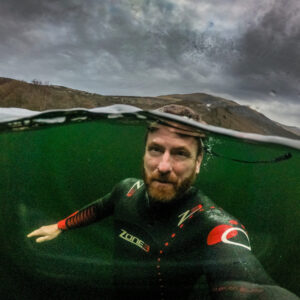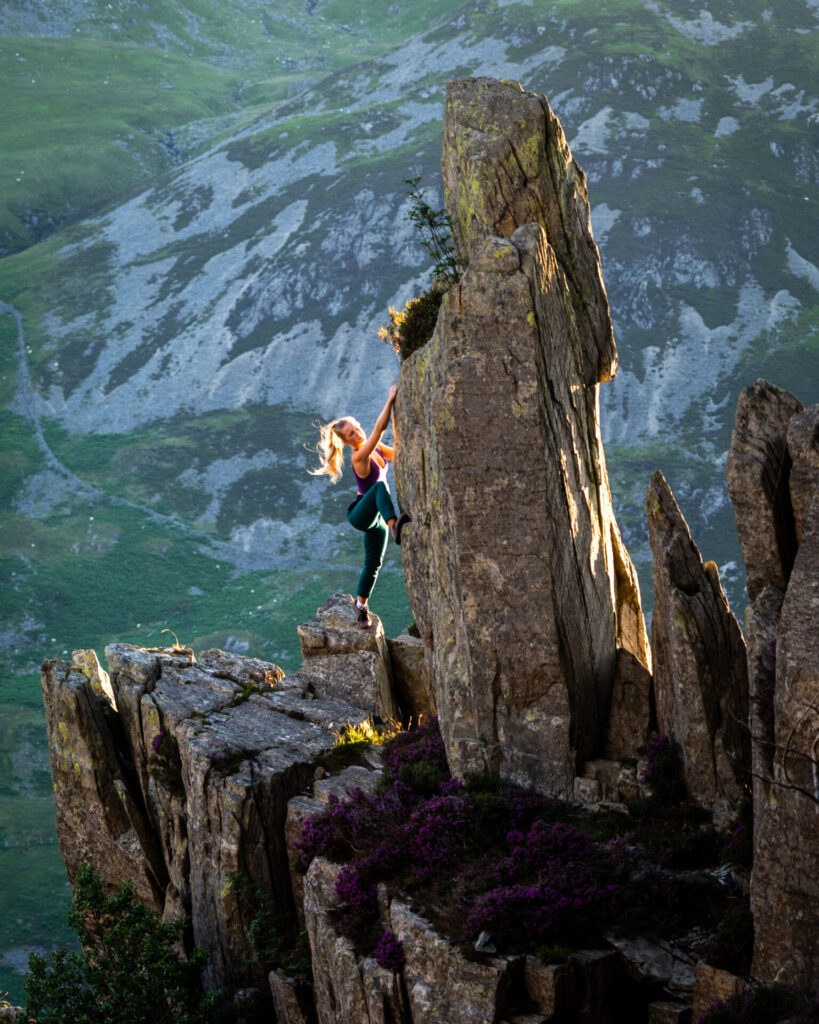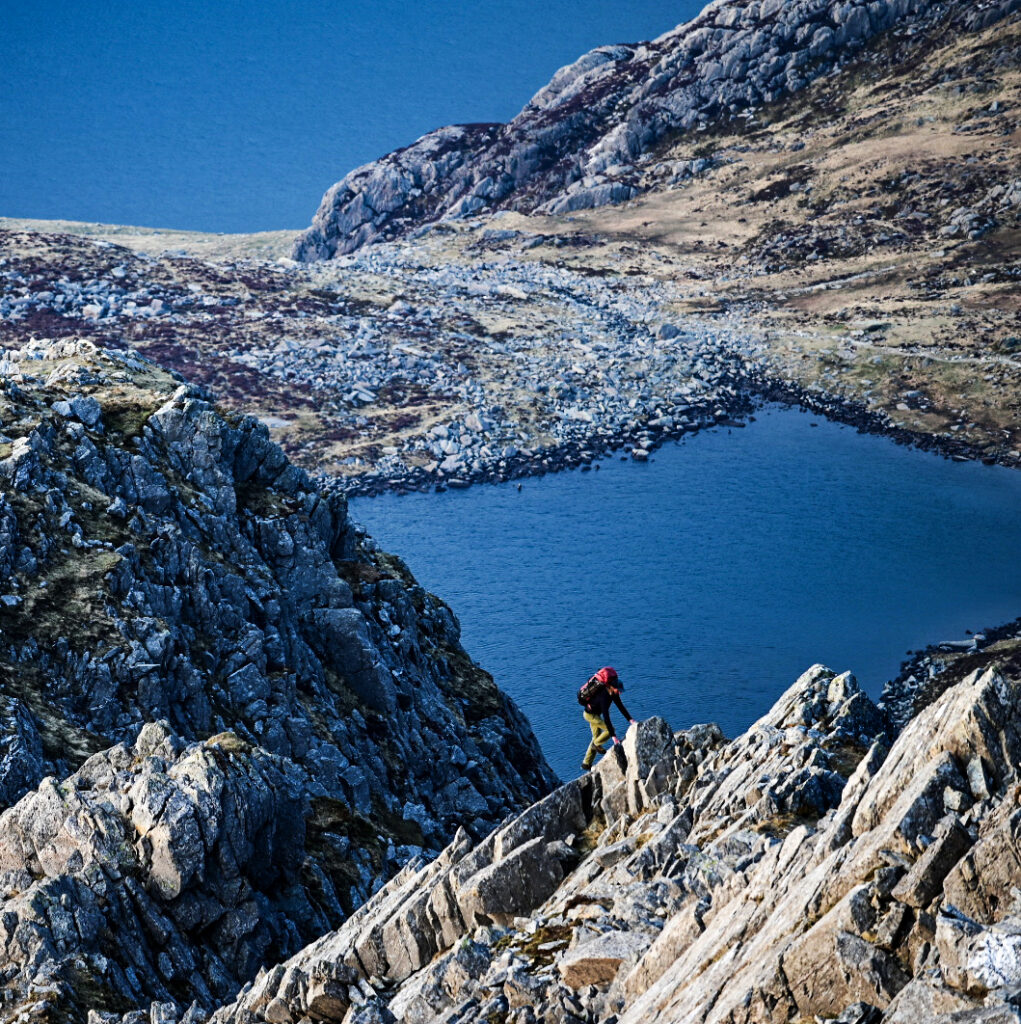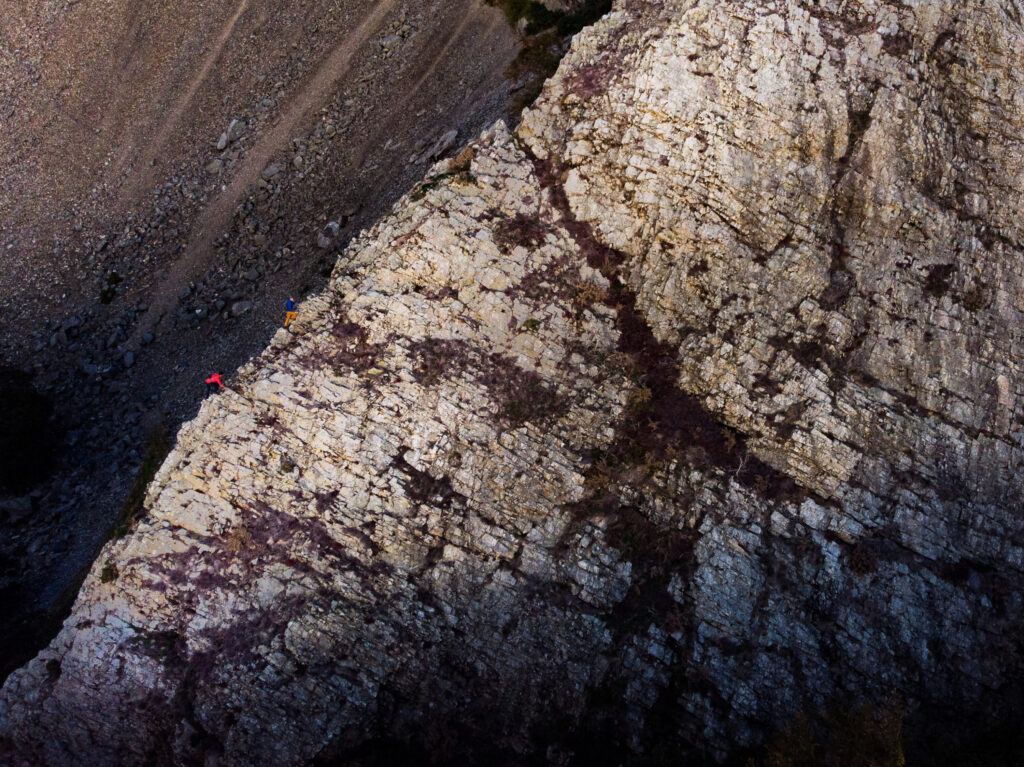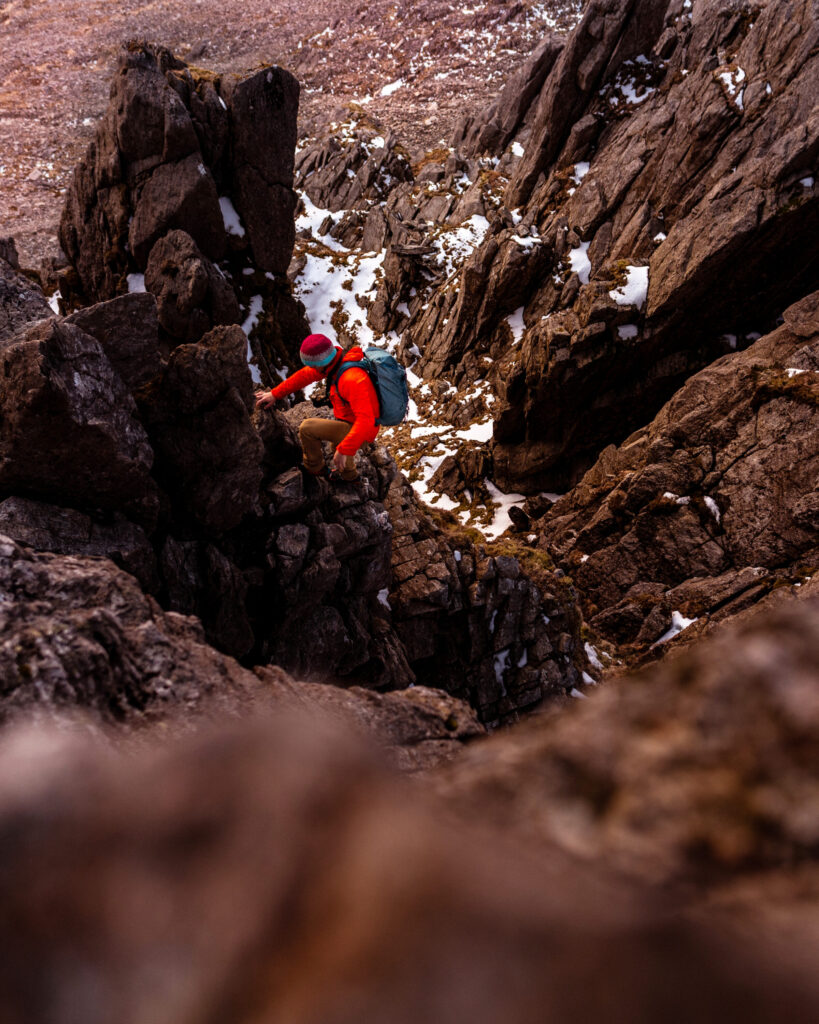Home Story An Introduction to Scrambling in the UK
An Introduction to Scrambling in the UK
Feature type Story
Read time 15 mins
Published Jan 10, 2022
Author Jethro Kiernan
Photographer Jethro Kiernan
Scrambling in the British mountains is one of the most satisfying genres of adventure available on our islands. It can also act as a catalyst for progress to more technical and challenging forms of mountaineering. Jethro Kiernan explains his own passion for the world-class scrambling close to his home in the heart of the Snowdonia National Park, and why it matters in broader context of adventure, both in Britain and elsewhere.
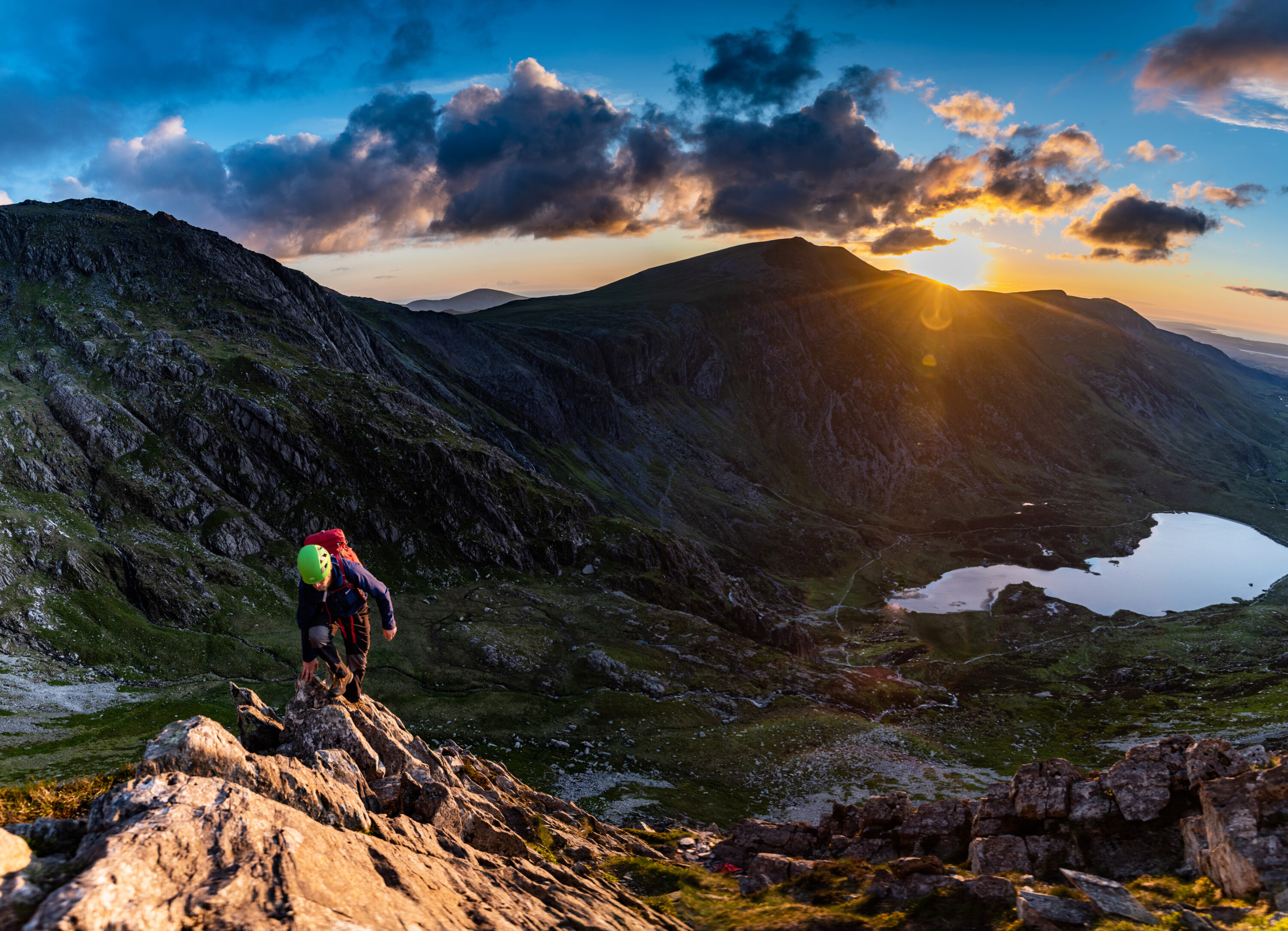
Gareth Owen finishing Cneifion Arête, a superb long scramble at Cwm Cneifion in the Llyn Idwal area of the Ogwen Valley, Snowdonia.
It’s a misty evening on Tryfan, one of the great peaks of Snowdonia. We’re four pitches up the immaculate rock of Notched Arête, one of the classic grade three scrambles of the British mountains. The cloud rolls in and out, teasing us with the promise of a glimpse of the sunset. Just a flicker of orange light appears then vanishes over the Carneddau to the north. Despite the classic Welsh weather, it had been another memorable evening scrambling with an old friend. The sun did make a brief and magical appearance. In fact, the clouds parted to reveal a few glimpses of pristine colour with the lakes below. A few muted ‘wows’ were all that was needed to share our mutual sense that this evening had been worth the optimism of getting out for a quick after-work hit in the mountains.
That shared moment got me thinking, too, about the art of scrambling more widely. In particular, I considered its place in the intersection between climbing, hillwalking and mountaineering. Scrambling, more than anything else, is the ‘gateway drug’ that leads from non-technical hillwalking into rock climbing and mountaineering. It’s the key to the door.
For me personally, that moment in the mists above the Ogwen valley covered so many of the elements of what makes scrambling in the British mountains such a special activity. It isn’t just the technical aspect of having to use your hands and feet together, and to move your body creatively to cover pathless terrain, but also the feeling of being completely absorbed by the mountain environment and its unique weather. On a different level, as a photographer scrambling allows me to be a participant in the action, able to take pictures whilst on the move, rather than being just an external observer. In this respect, scrambling photography can be much more authentic than a great deal of modern climbing photography that’s often shot from the contrivance of a fixed abseil rope.
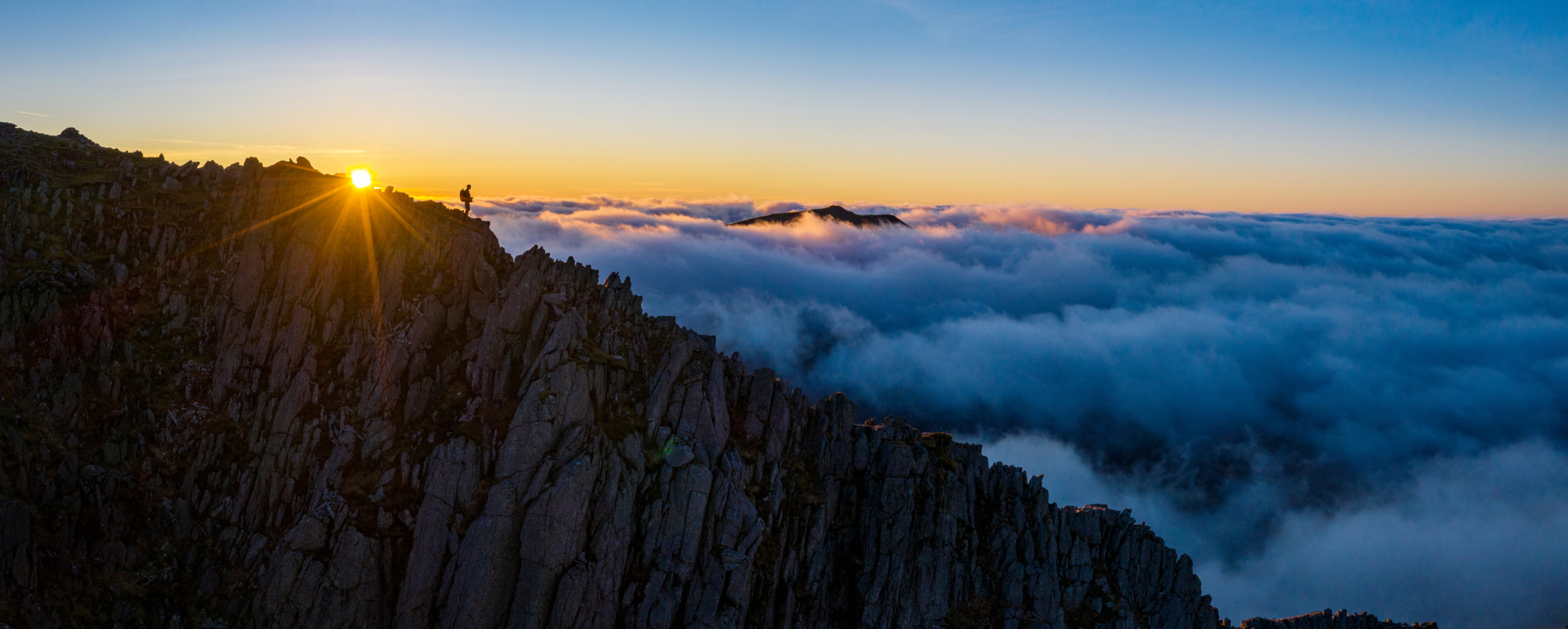
Striding along Y Gribin in the heart of the Glyderau above a sea of clouds.
Far more than hillwalking, mountain scrambling forces you to engage with the terrain that encases you
Scrambling has marked my own personal journey through the mountains, both as a climber and as a photographer. My very first climbing pictures were taken on the super-classic Pinnacle Ridge in the Ogwen valley on a school trip; my first winter scrambling was with the same club on Y Cribin in the snow; and with international travel on hold during the pandemic, scrambling in Snowdonia has once again been an important means of exploration and escape in my local area, and has become a focus of my time and photography recently.
Far more than hillwalking, scrambling requires you to focus and engage with the terrain of the mountains at a fundamental level. It forces you to live ‘in the now’ whilst also making you aware of the consequences of any mistakes. Starting off in UK mountain scrambling, you need nothing but your usual mountain walking equipment and a good pair of boots or approach shoes, with the latter often being far superior in dry conditions as they are much lighter. As you progress, you’ll begin to learn to focus on your balance on steeper and more exposed ground. You’ll learn to read the terrain and the quality of the rock as you move along ridges and around notches, down gullies and across ledges, constantly engaging with the changing terrain and responding to its challenges.
By its very nature, scrambling takes you away from the crowds. It places you far above the well-trodden paths, and affords vantage points from where walkers below will become distant dots, and the circling ravens and peregrine falcons are your nearest companions. (Unless, that is, you’re on Crib Goch on a bank holiday weekend. During busy times, related issues around crowds on popular scrambles raise themselves – the greatest danger on a busy scramble is often from other people rather than from the terrain itself, so be careful.)
Scrambling is a wonderfully hybrid kind of activity. You can scramble as a runner, a rock climber, a hillwalker, or a full-blown mountaineer. You can slip on your trainers and shorts and do a fast round of grade one terrain on a sunlit evening, or you could go on a claggy day with big boots and waterproofs for some ‘full value’ mountain time, or it could be just yourself, a pair of approach shoes and a camera. Alternatively, you could wait for the snow and bring out the crampons and axes for the ideal introduction to alpine mountaineering: scrambling in the British mountains in the icy winter months.
The mountains of the UK may be relatively modest, at least in stature, compared to the Alps or the Greater Ranges. But crossing Crib Goch for the first time – surrounded by the shining summits of Snowdonia with the lakes glittering in the cwms below – can only be described as a true mountaineering experience. For some, it maybe a pinnacle of a hillwalking career on otherwise non-technical peaks. For others, it might be the beginning of a road to more adventurous trips to the Alps and beyond. Whatever your specific interest in scrambling, the unique sensation of moving effectively through pathless, rocky, and sometimes exposed terrain in the British mountains is of huge value in itself, and the multitude of other experiences and challenges it can lead to gives it a special place within the echelon of the established mountain sports.
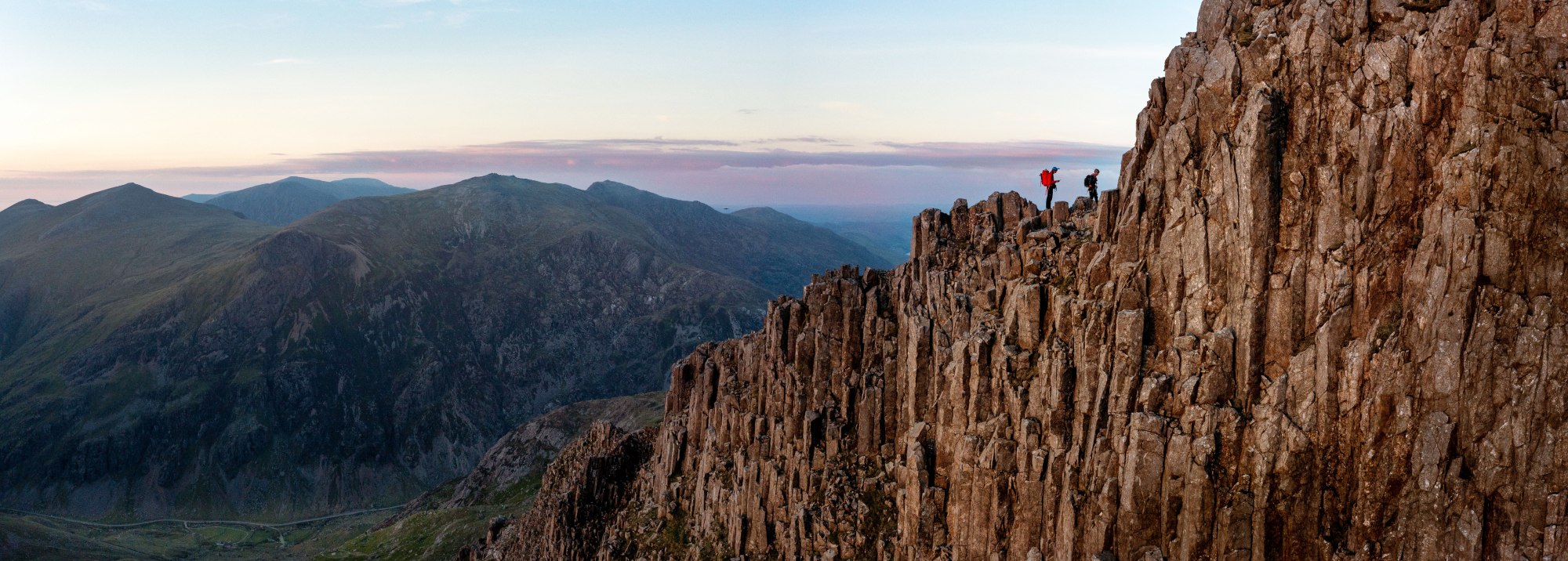
Heading up the North Ridge of Tryfan (Grade 1), Glyder Fach.
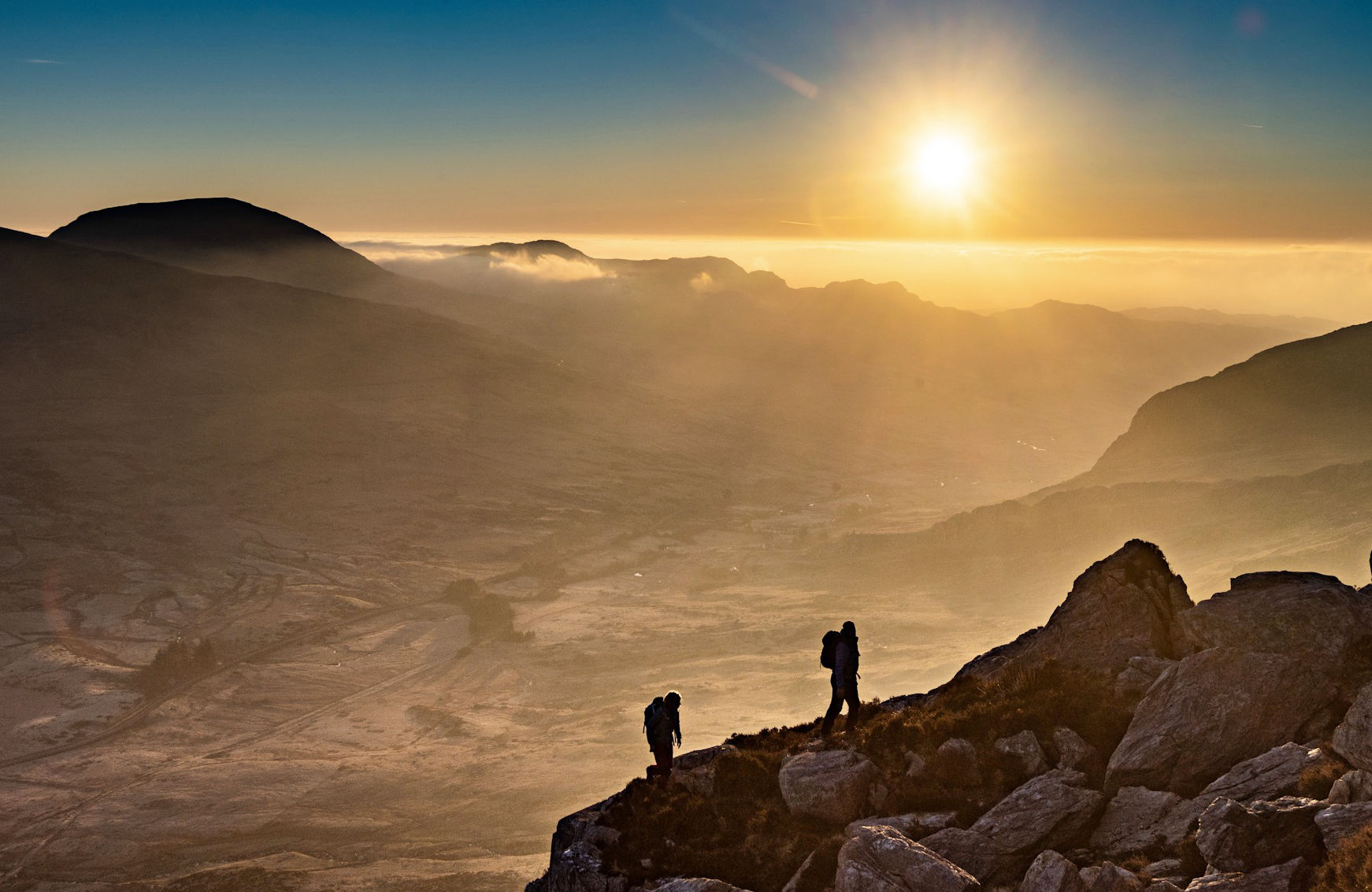
Epic winter light on Clogwyn y Person Arête (Grade 3), an excellent scramble on the quieter northern flanks of Snowdon.
Appetisers
The following scrambles represent the transition from hillwalking to scrambling. These routes, whilst technically easy, cover steep ground and should be treated with respect, a good base of mountain knowledge, and proper equipment.
Crib Goch, Yr Wyddfa (Snowdon)
The classic and deservedly popular, visually stunning with a wildly exposed knife-edge ridge. Despite its popularity, on a midweek evening it’s still possible to have the place to yourselves. For many, this is the intersection where hillwalking and mountaineering meet. With clean rock and big drops with dramatic views all around, it’s technically easy, grade one scrambling, but weather will have a dramatic effect on the difficulty. For a bigger day out try the Snowdon Horseshoe: a truly great British round. A layer of snow and ice in winter turns it into a magical (often intimidating) experience.
Tryfan North Ridge
Starting from the layby at the east end of Llyn Ogwen an exercise in route finding becomes more ridge like as youhigher up the mountain and Tryfan is the mountains mountain of Wales, good in conjunction with Bristly ridge for a full mountain day.
Bristly Ridge, Glyder Fach
A snaggle-toothed ridge rising from Cwm Bochlwyd taking you up to the rugged summit s of the Glyderau never too hard but always leaves you feeling like you’re truly mountaineering.
Bochlwyd Round
Combine the last two ridges with a descent of Y Cribin gives a proper ‘big mountain day’ out of grade one scrambling.
Striding Edge, Helvellyn, Lake District
Over in Egnland, this super-classic grade one scramble reaches the summit of Helvellyn via a spectacular exposed ridge-line.

Topping out to the glorious vista across the Ogwen Valley and towards the distant Irish Sea after a day’s scrambling in the Glyderau.
Main Courses
Moving on from the intersection with hillwalking into the territory of true climbing, these routes will need some experience of pitched rock climbing, ropework, and route-finding on steep ground. This is the real deal!
Cneifion ARÊTE, Cwm Cneifion
A personal favourite of mine, which helped reignite my love of scrambling and exploring the rockier sections of the mountains, sitting above Cwm Cniefion (an atmospheric hanging valley), the arête is a lovely fin of rock that takes you up to Y Cribin which in turn can take to the rugged summits of the Glyderau. Catching the evening light it starts with a steep short section that is certainly in the realms of climbing before following the ridge line in classic scrambling territory. This is a favourite of local guides training people up for the Alps and has that ‘summer alpine’ feel to it.
Notched ARÊTE, Tryfan
One of my favourite routes on one of my favourite mountains. Best approached from the north ridge of Tryfan, it heads up steep clean rock for four pitches high above the Ogwen Valley before finishing on the north summit of Tryfan itself.
Glogwyn Y Person Arête, Llanberis pass
Another classic North Wales grade three scramble rising high above the flanks of Llanberis pass and finishing on Crib Y Ddysgl. I’ve had some fine summer evenings chasing the evening sun up the arête to finish as the sun sets over the Irish sea. For a bigger day, turn left, reverse Crib Goch and then descend the north ridge of Crib Goch for a very fine round.
Rowan Route, Milestone Buttress
A short, sweet, but tricky grade three scramble in the Ogwen Valley; this is the transition from scrambling to technical climbing.
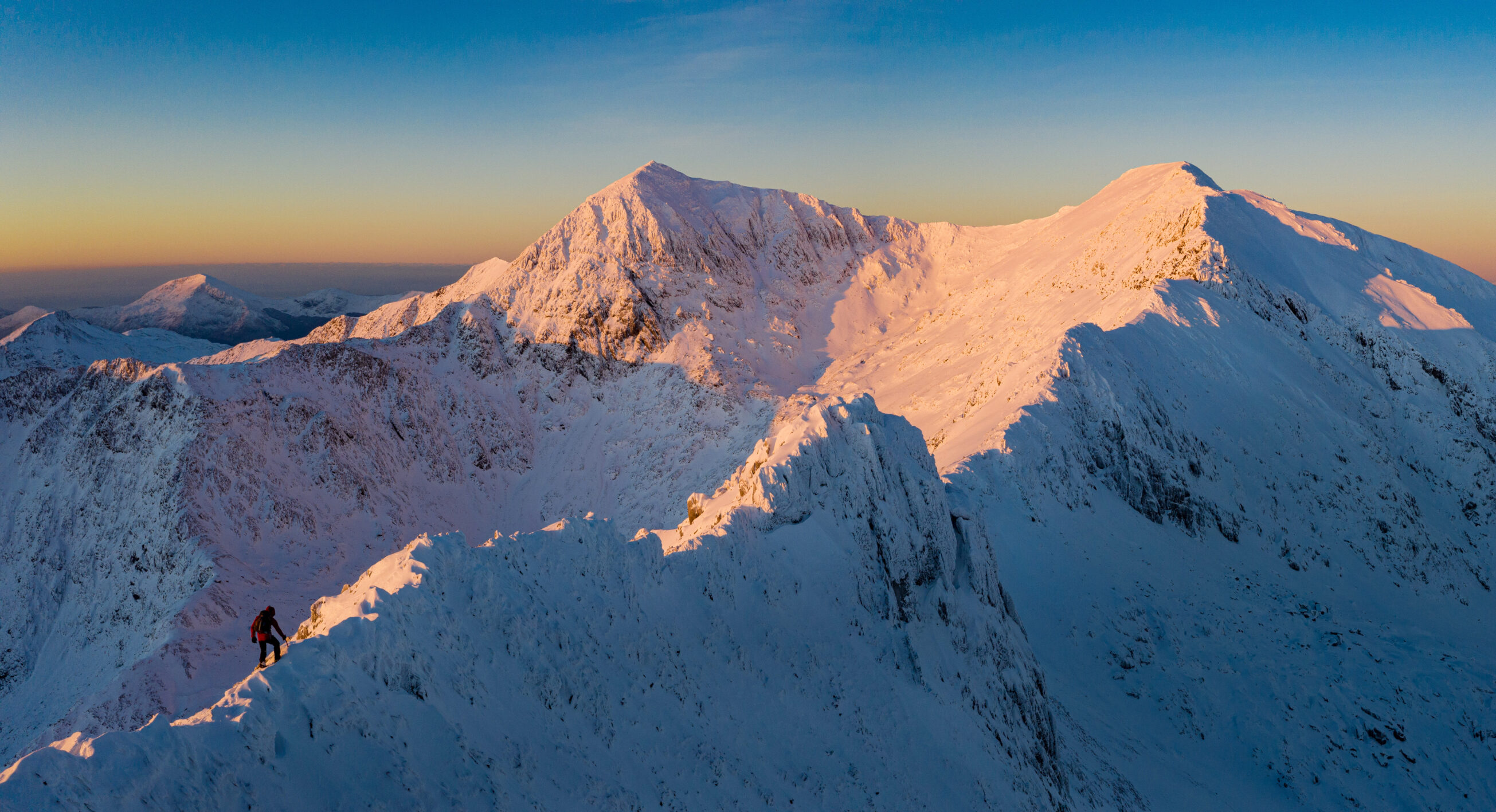
Crib Goch in all its winter alpine glory: the perfect gateway from scrambling to mountainering.
beta
Scrambling is a predominantly UK-focused term that covers what would be called mountaineering in Europe and America. Apart from some summits in the Cuillin Hills of Skye, and a few other isolated peaks, you can get to the tops of most UK mountains by walking rather than mountaineering.
Grading
Scrambling is graded from one to three: grade one is predominantly exposed walking with relatively short sections where you have to use your hands, and grade three can overlap with the easier rock climbing grades, and will require the use of ropes and climbing gear.
Safety
Mountain rescue teams were particularly busy over 2020-21 in the UK as the mountains became a much-needed escape during the pandemic. A fair few of these incidents were in scrambling terrain, due to people overextending themselves on territory they were not comfortable or proficient with – so be careful out there. A good rule of thumb is that if you feel outside your own margins of safety you probably are, and should go back rather than continuing on.
By the very nature of the territory it passes through, scrambling is potentially serious, and carries all the same risks we associate with climbing and mountaineering. Scrambling also has different risks to pitched rock climbing: it often carries less risk of rockfall hazards, but more risk of injuries from slips or falls from height due to the constant, unroped movement. Changing weather is a constant risk in the mountains, and current conditions should always be checked via the detailed mountain weather information service mwis.org.uk, and the Met Office local area forecast.
Guiding & Guidebooks
The best way to get into scrambling is via a professional guide. Many guides run specific introduction to scrambling where they will help you gain the confidence and knowledge to start tackling this territory by yourself. The Association of Mountain Instructors is a good place to start looking for a guide. Good guidebooks for British scrambling include Mountain Walks and Scrambles by Mark Reeves (Rockfax guides) and North Wales Scrambles by Garry Smith.
Don’t miss a single adventure
Sign up to our free newsletter and get a weekly BASE hit to your inbox
Other posts by this author
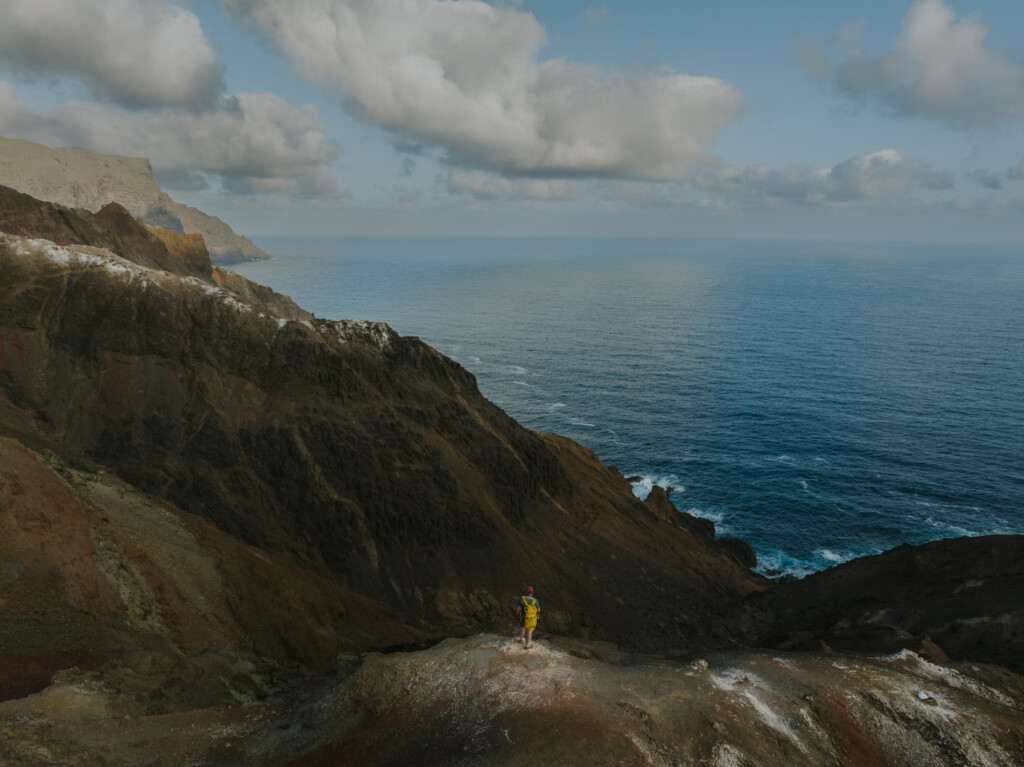
Photo Essay • Jethro Kiernan • Jan 15, 2024
St Helena: the land fleck a world apart
Impressions of an overlooked outpost in the South Atlantic brimming with potential
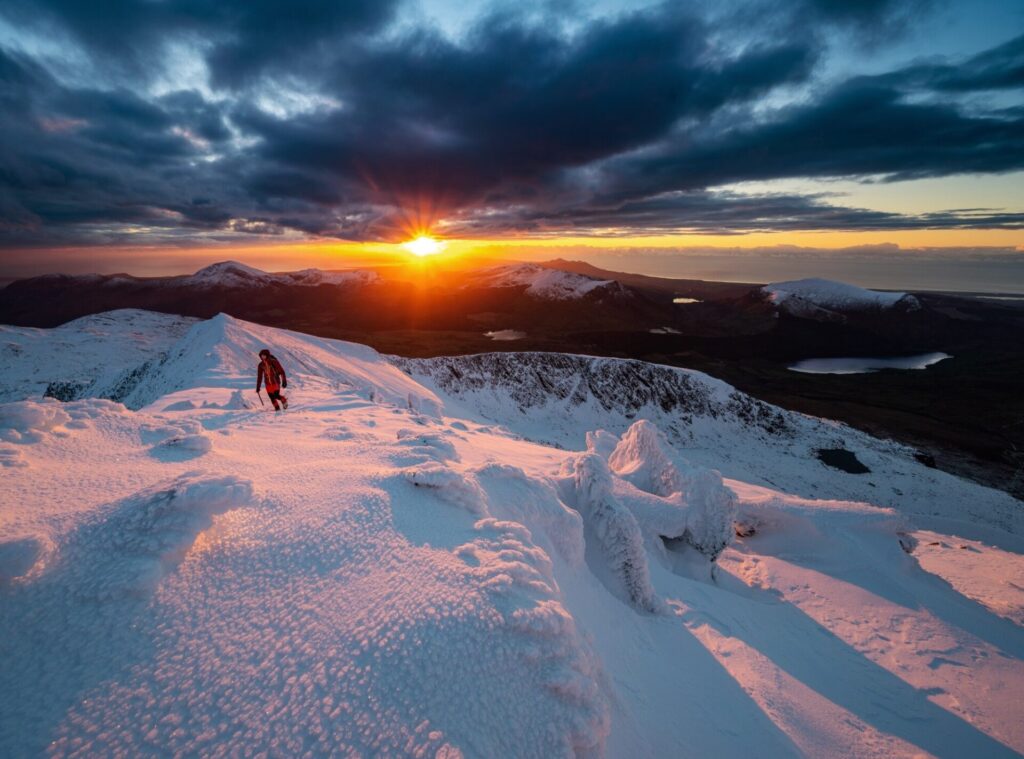
Photo Essay • Jethro Kiernan • Jan 20, 2021
Has Winter in Snowdonia Ever Looked This Good?
At the turn of the year snow conditions in North Wales were about as good as they get.
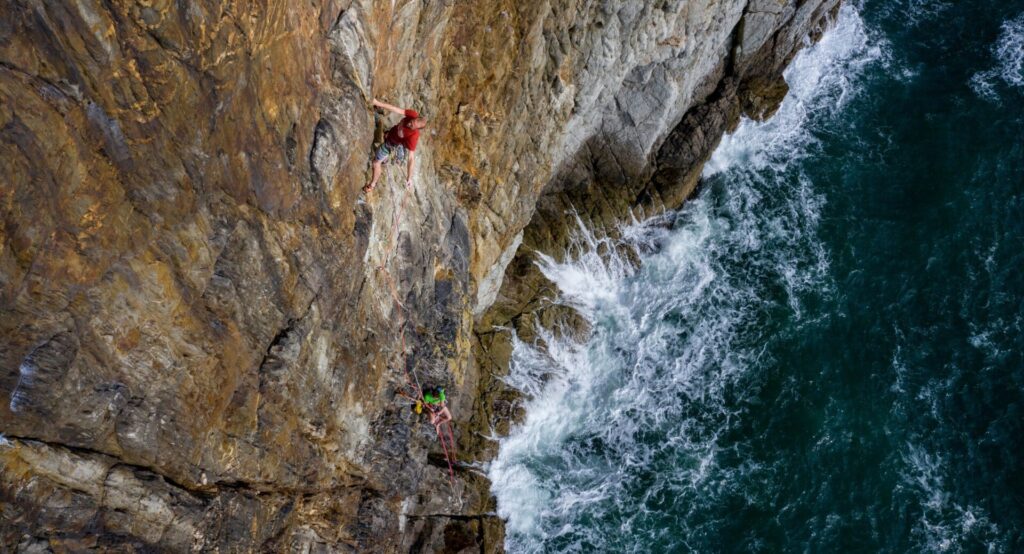
Story • Jethro Kiernan • Dec 21, 2020
Between Land and Sea
Sea cliff climbing adventures from North Wales
You might also like
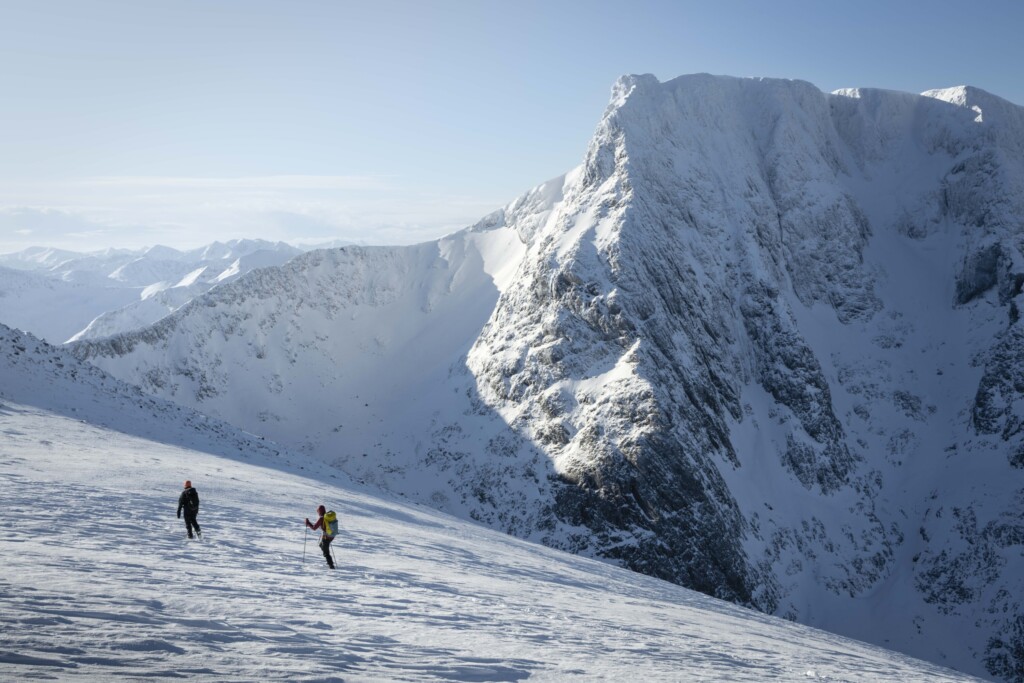
Story • BASE editorial team • Nov 21, 2023
Five Epic UK Climbs You Should Try This Winter
Craving a snowy mountain adventure? Inspired by the Garmin Instinct 2 watch (into which you can directly plan these routes), we've compiled a list of five of the best for winter 2023-24!

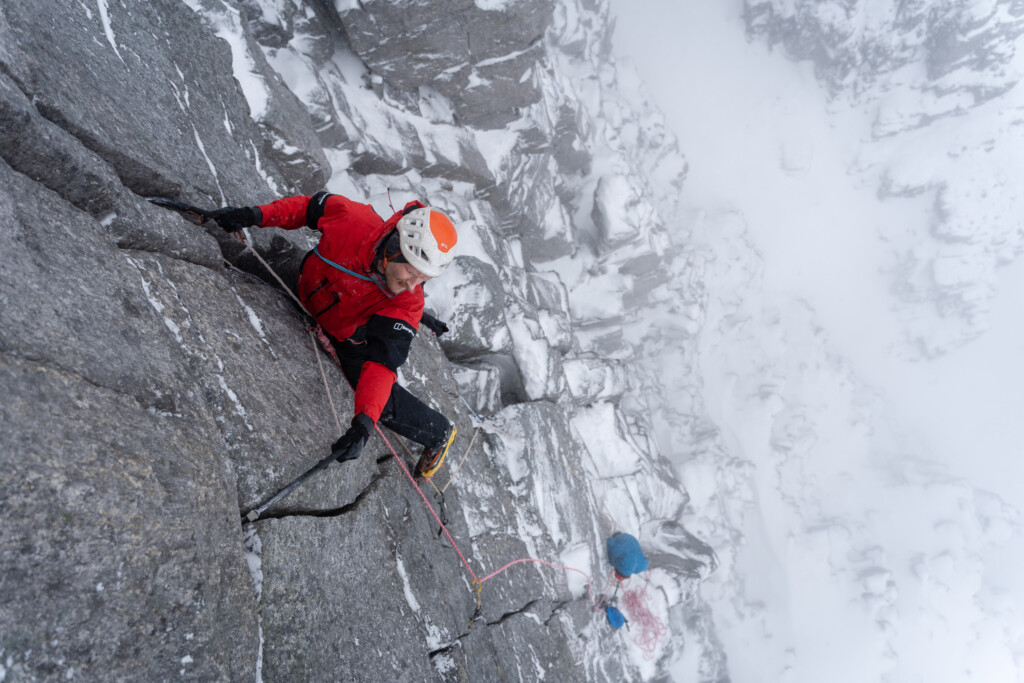
Video • BASE editorial team • Jul 21, 2023
Merging Two Lives: The Personal Journey of Hamish Frost
The challenges and triumphs of embracing sexuality in the outdoors
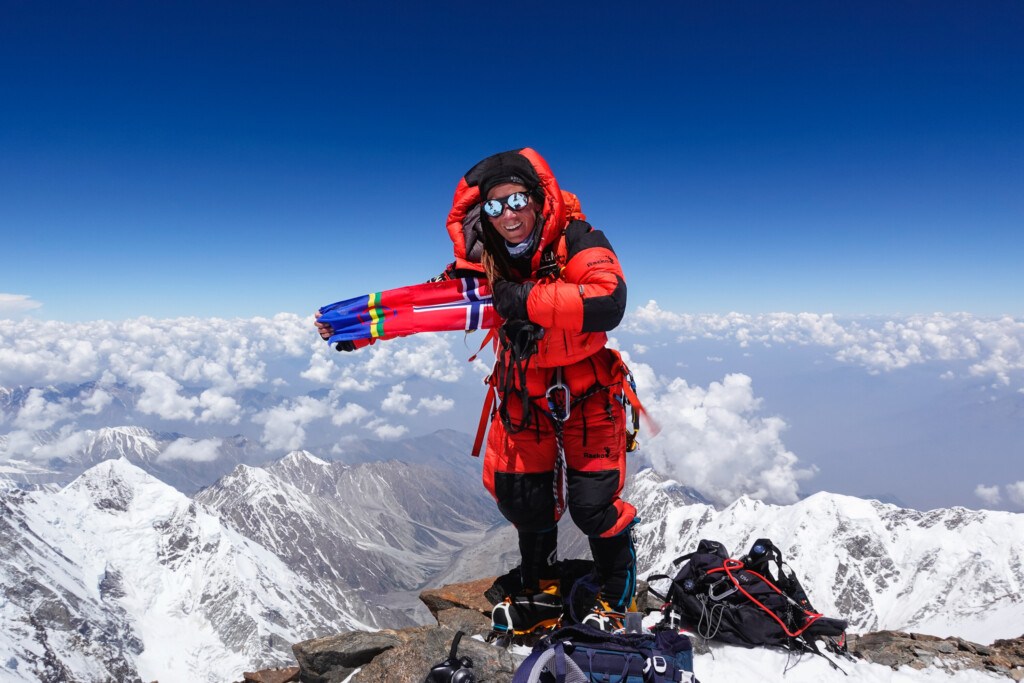
Interview • Hannah Mitchell • Jun 13, 2023
Chasing The 14: The Kristin Harila Interview
In conversation with record-breaking Norwegian mountaineer and Osprey ambassador, Kristin Harila

